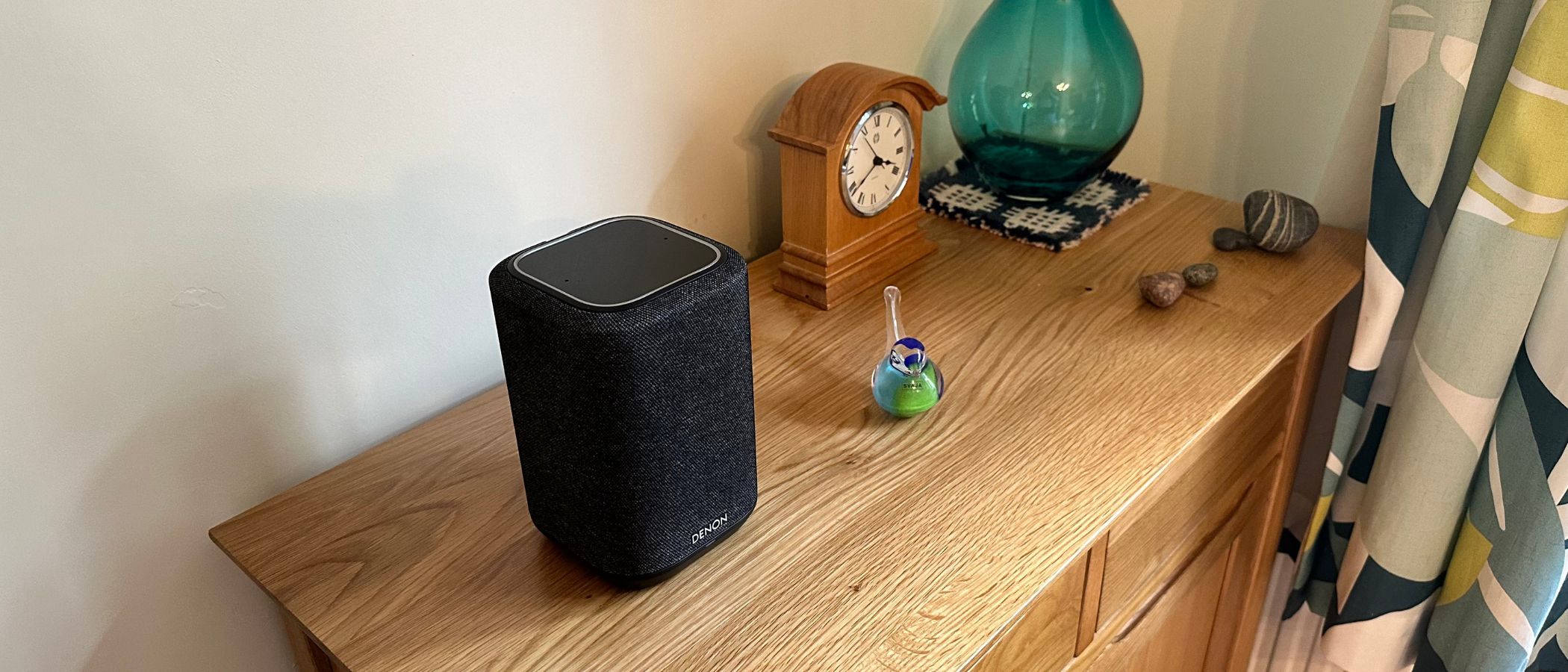iMore Verdict
The Denon Home 150 is a very solid entry in the smart speaker landscape, with some excellent connectivity options and good sound quality. It might not look as interesting as others, but it makes up for it elsewhere.
Pros
- +
Refined sound signature
- +
Great connectivity options
- +
Useful app
Cons
- -
Could be a little bassier
- -
Looks a little bland
- -
Stiff competition elsewhere
You can always trust iMore.
The HiFi space has been waking up to the smart speaker sector for a little while now, catching up to the umbrella of less-focussed tech companies with some interesting options. Companies that have made solely sound gear have noticed that they can’t ignore the ever-burgeoning space, and are now launching speakers that fit the bill.
The Denon Home 150 is just one such speaker. A smart speaker that can be controlled with Alexa, hooked up with Apple AirPlay, and even connected over Bluetooth. It looks like it will slip perfectly into any decor and style: But let's see if it's worth it.
Denon Home 150: Price and availability
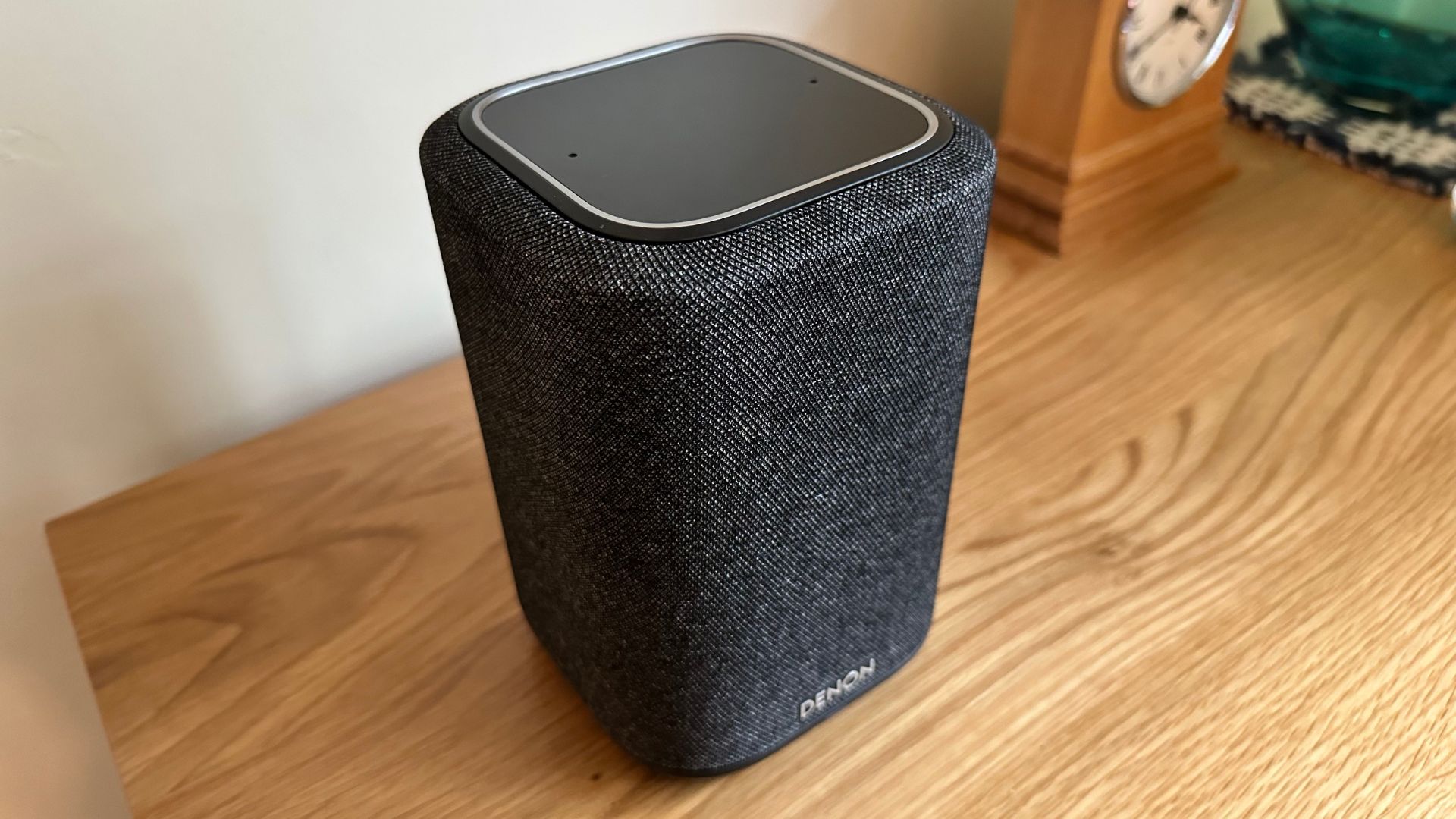
The Denon Home 150 is available for $249/£219. That’s a pretty good price for a smart speaker, especially one that looks, feels, and sounds as good as this one does. It’s occasionally seen price drops below $200 as well, making it an even better value. That puts it a little less expensive than the HomePod 2, but around the same as the Sonos Era 100.
You can grab one from Amazon, or you can head to the Denon store and choose a color: Black (which has more gray on it) Or white (which also has more, albeit lighter, gray on it).
Denon Home 150: What I liked
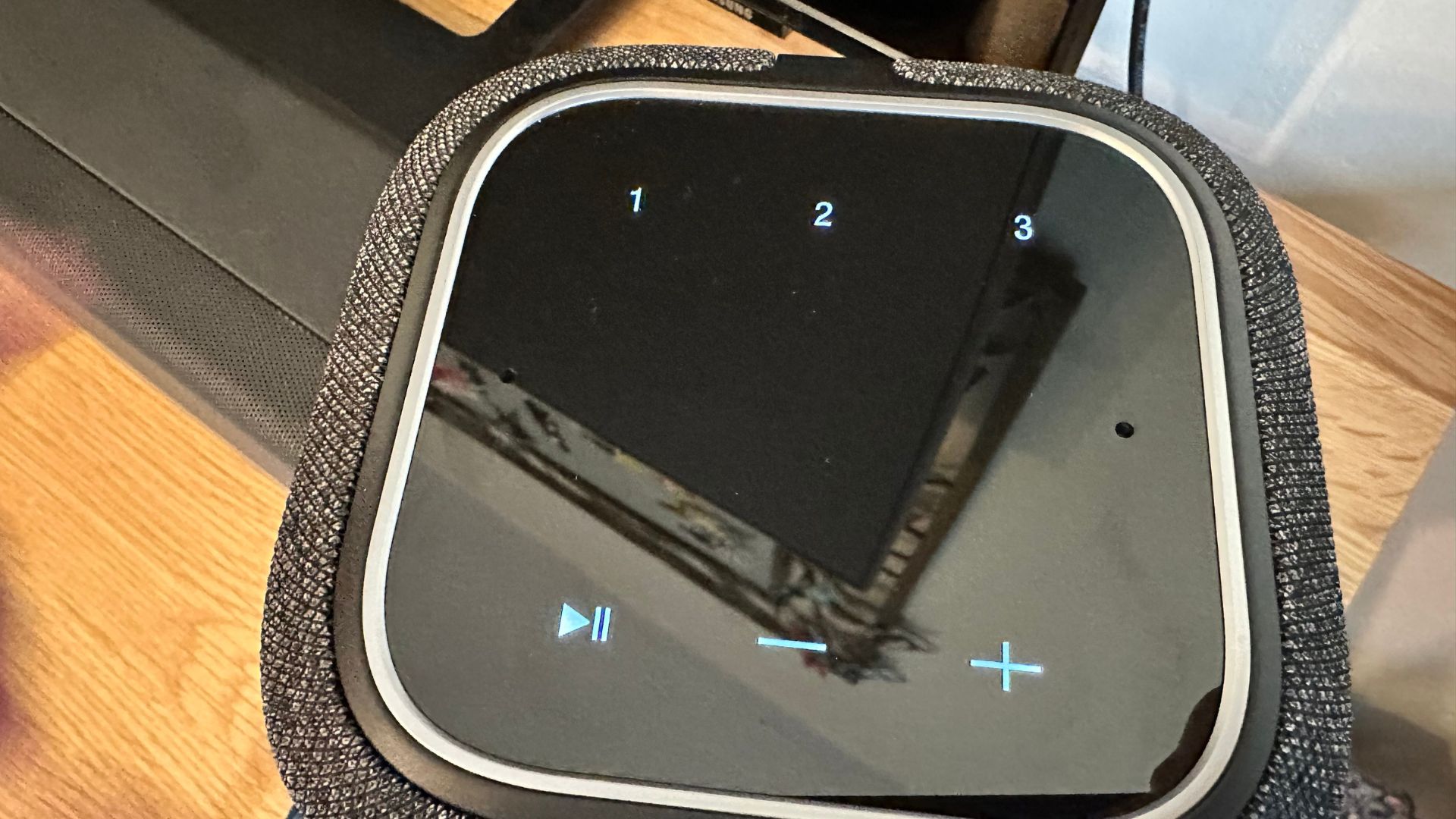
Funnily enough, I think the touch controls on the top panel of the device are a particular highlight. I love how they illuminate as you bring your finger close, letting you see them when you need them while they blend seamlessly into the piano black top surface when you don’t. Those buttons are useful too, with a play/pause button, a pair of volume keys, and then some connection option buttons above.
The latter buttons let you cycle through the connection methods, as if the name didn’t tell you enough. The first is AirPlay 2, which works super well, as always, with all your Apple Kit. You won’t be able to command Siri to play music on the speaker directly, but you can direct music to it from a HomePod or your phone. The second is Bluetooth, and there are a couple of ways you can get hooked up.
The buttons are useful too, with a play/pause button, a pair of volume keys, and then some connection option buttons above.
The first device you use connects up with the button on top, letting you pop into the settings app and get everything working as you normally would with a Bluetooth speaker. Then, once that device is already paired, you can connect other devices with the little Bluetooth button at the back. It's solid and works well with support for numerous Hi-Res streaming options. As with all Bluetooth options, however, no lossless audio.
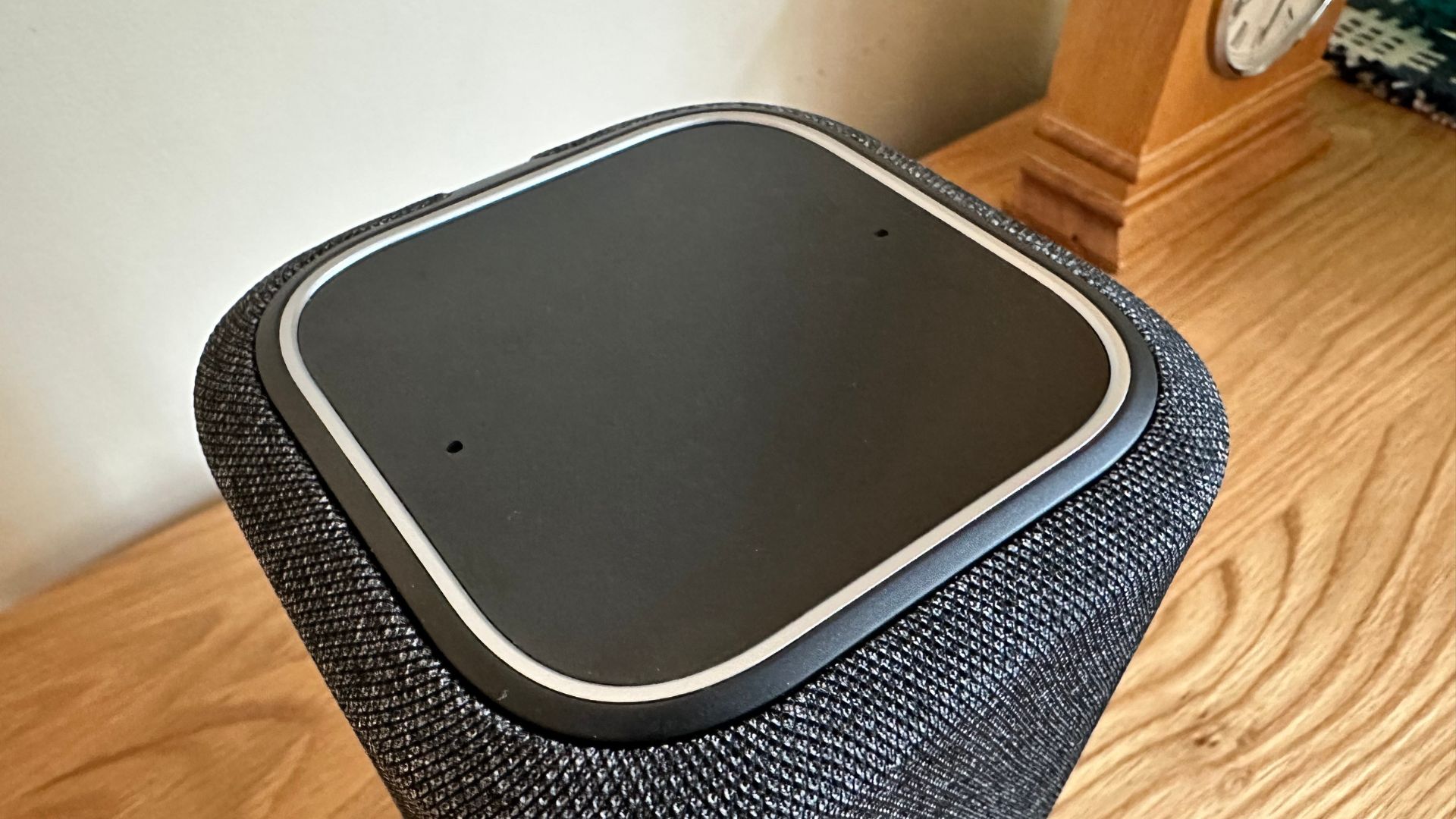
The final connection button is for the App that you can use to control and set up the speaker, HEOS. Here, you can log into a few of your favorite streaming services and control them all in one place. It works well, but there are a couple of streaming services missing here in my eyes, such as Apple Music or my personal beau, Qobuz. Those that are there work really well in the app, however, and the rest of the app is good. It’s also not to say that they don’t work with the speaker – they’ll still hook up over AirPlay, but you can’t log in through the app.
You can control a couple of extra things from the app, such as the brightness of the touch buttons on top and the EQ of the speaker. It's all super easy, although the EQ controls are a little light on the ground – you can change the amount of treble or the amount of bass. There’s no option to change response through the frequency range, although this is generally only worth having a play with if you know what you’re doing. For most people, it's going to let you dial in the speaker to your preferred listening style.
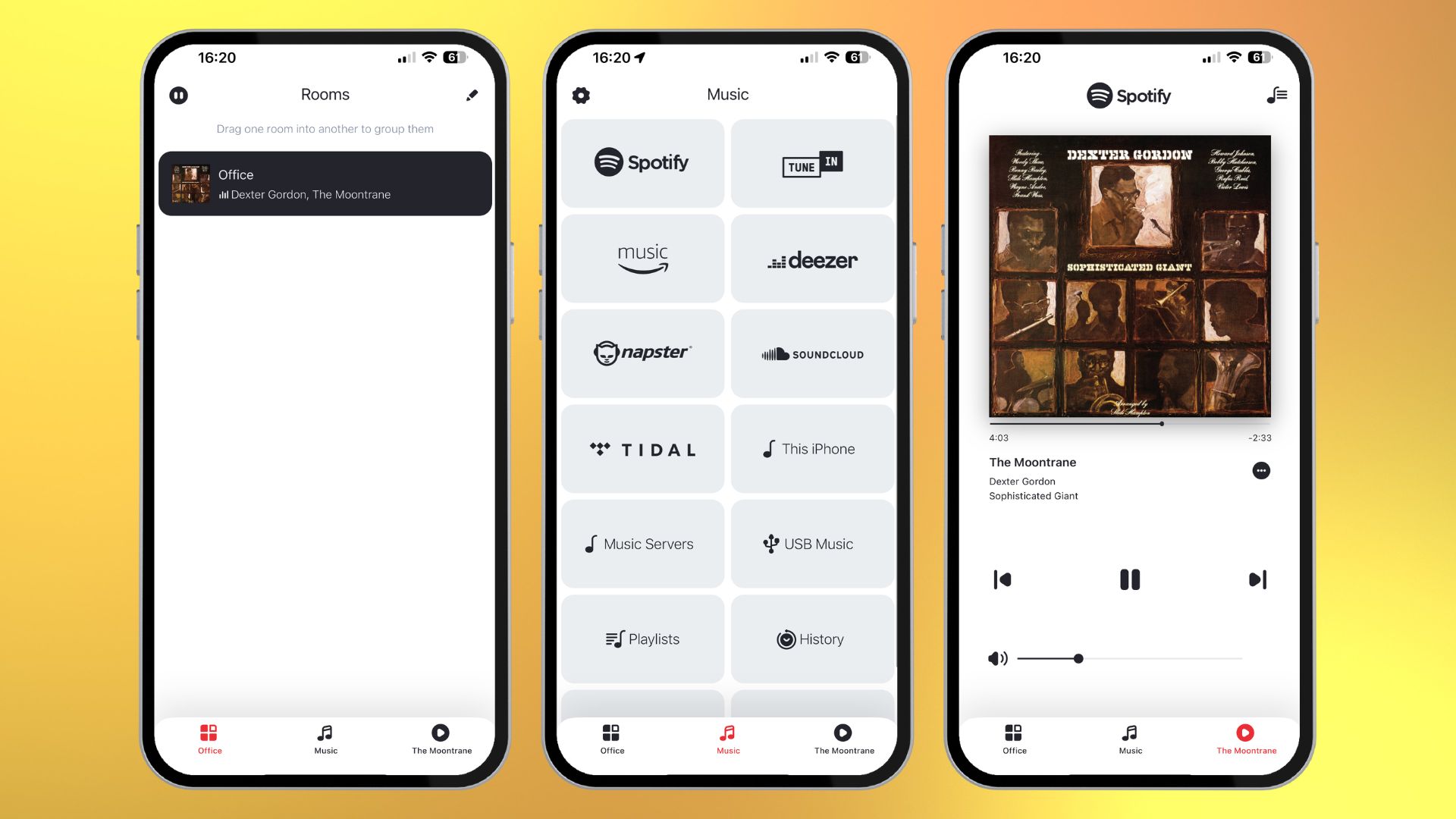
The app is also how you can get the voice assistant working – in this case, Amazon’s Alexa assistant. It works well enough, and while I’m not a usual user of the non-Apple voice butler, it’s nice to see that it functions perfectly, playing music from Amazon Music and other sources. It’s fine – although Siri support would be nice. This is also where you can set up multiple speakers in a multiroom setup – alas, I didn’t have the chance to try this out, but if it works like the rest of the app, then it’s going to be a solid option.
Once you’re through the app and all the other bits and bobs, we can finally look at what I think is the most important thing – the sound. And yeah, as you might expect from Denon, it’s really good. It’s got plenty of bite in the higher regions of the range, with cymbals and distorted guitars crashing with fury, and there’s some lovely thickness to the midrange too. Bass is good, if a little restrained, although in my eyes, this is more of a good thing than a bad one.
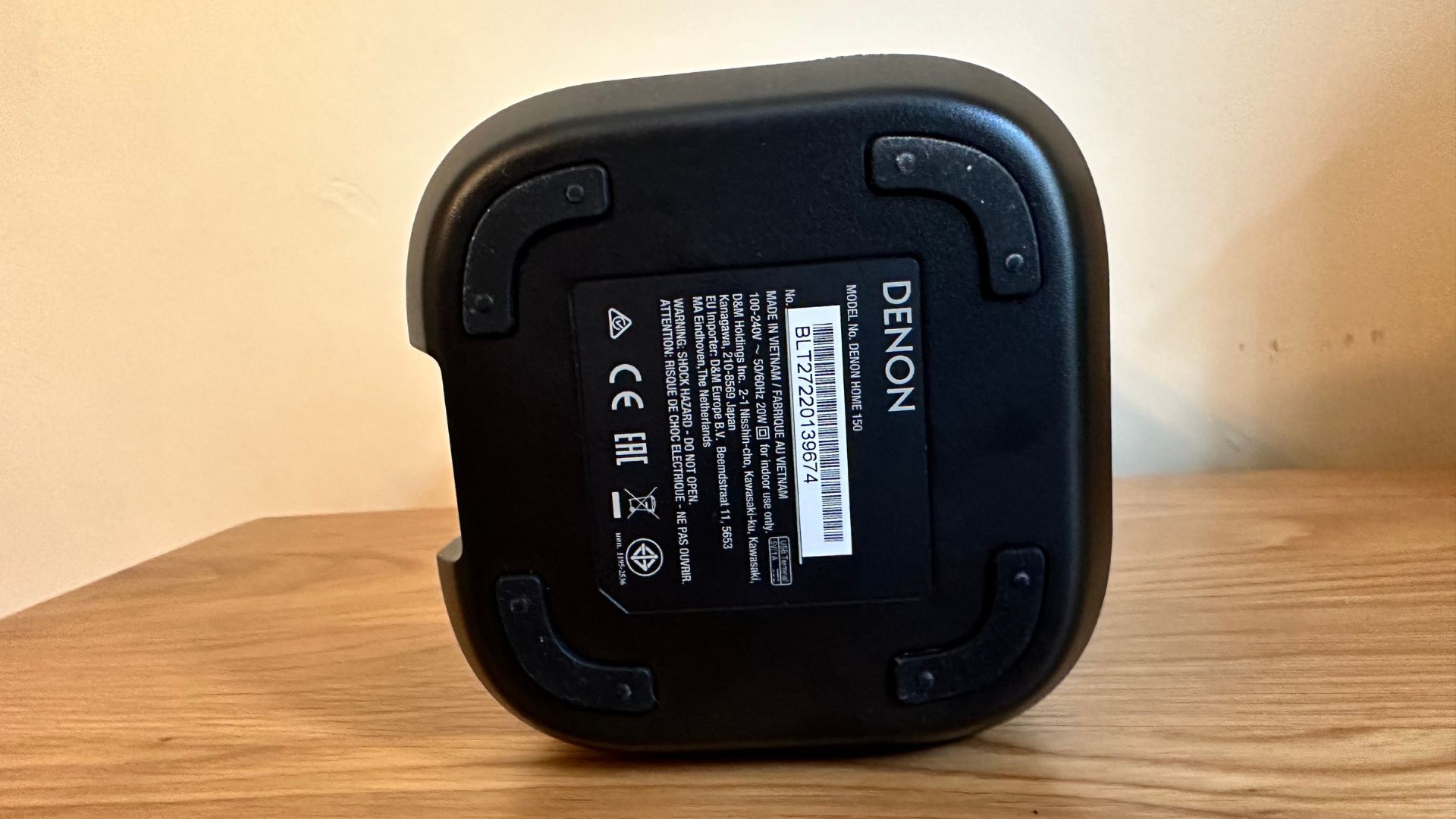
Playing Behemoths Blow Your Trumpets Gabriel, and the speaker has no problems with something as cacophonous and extreme as this track can muster. The bass lightness means there’s no boominess to the track, and the blade-like cymbals are able to cut through the mix to make it sound extra scary and intimidating. Nergal’s growled vocal line is perfectly raw and untamed, and the speaker masterfully works its way into the depths of the noise.
For something a little lighter, Dave Brubeck’s Take Five ends up center stage. The bass is more than enough to perfectly pick out the double bass, and that detailed top-end makes the sax wickedly smooth. The Drums power along with aplomb – jazz sounds great on the speaker.
Denon Home 150: What I didn’t like
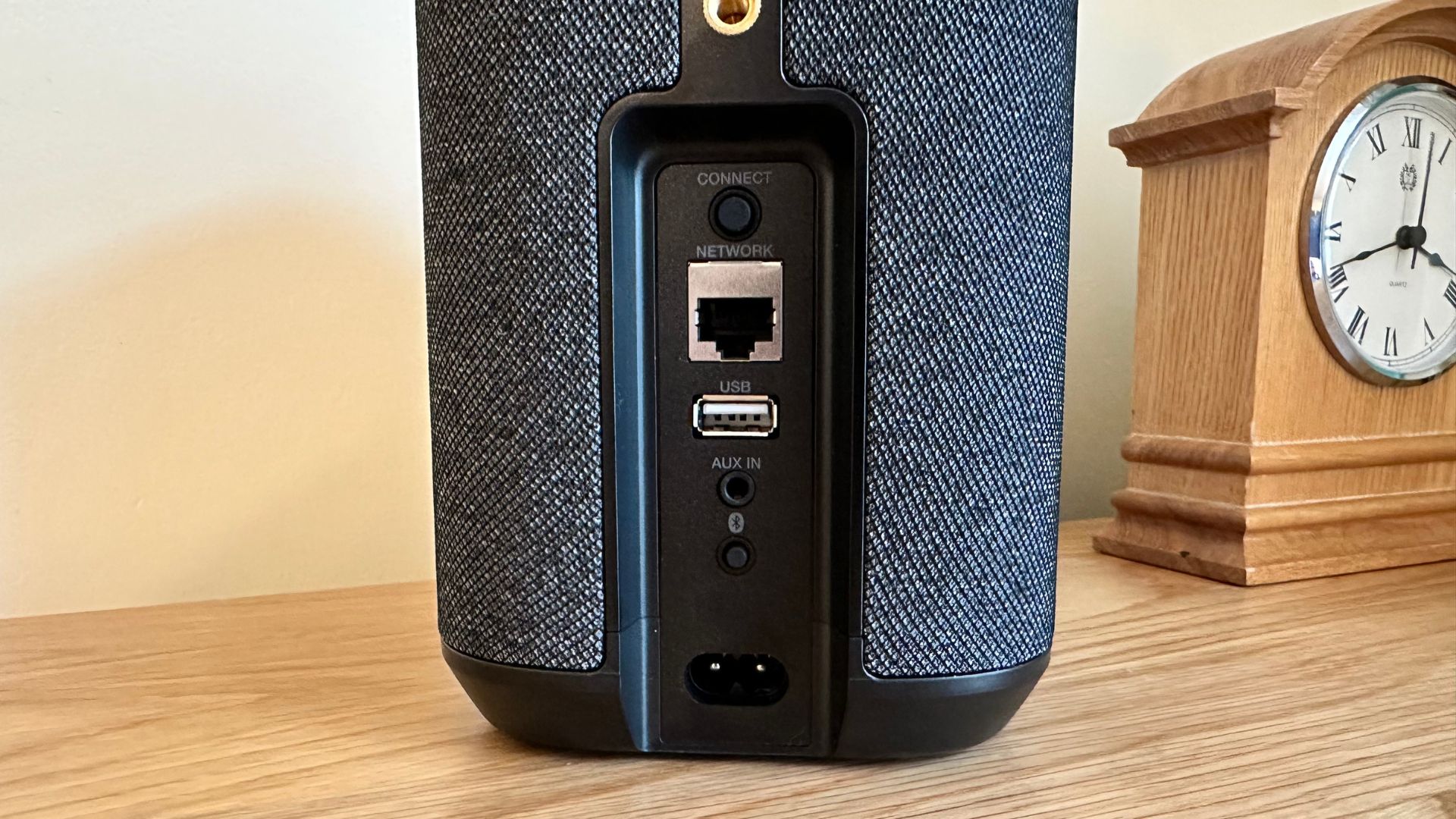
The speaker looks really boring. Don’t get me wrong, it will blend into the background of a room if that’s what you want it to do, but it has no flair. It is the very definition of ‘the smart speaker design’, with a gray mesh covering, in this case, a plastic oblong with some lights on the outside and some drivers on the inside. In a world with the likes of the Sonos Era 300, it would be nice to see something a little more creative.
That lack of bass also means that for hip-hop or drum and bass, the speaker leaves a little to be desired. It’s the sub-bass – it doesn’t seem to go quite far enough down. That means that dance tracks like Biceps Glue have plenty of mid-bass punch, but they lack a certain amount of low-end grunt.
Denon Home 150: Competition
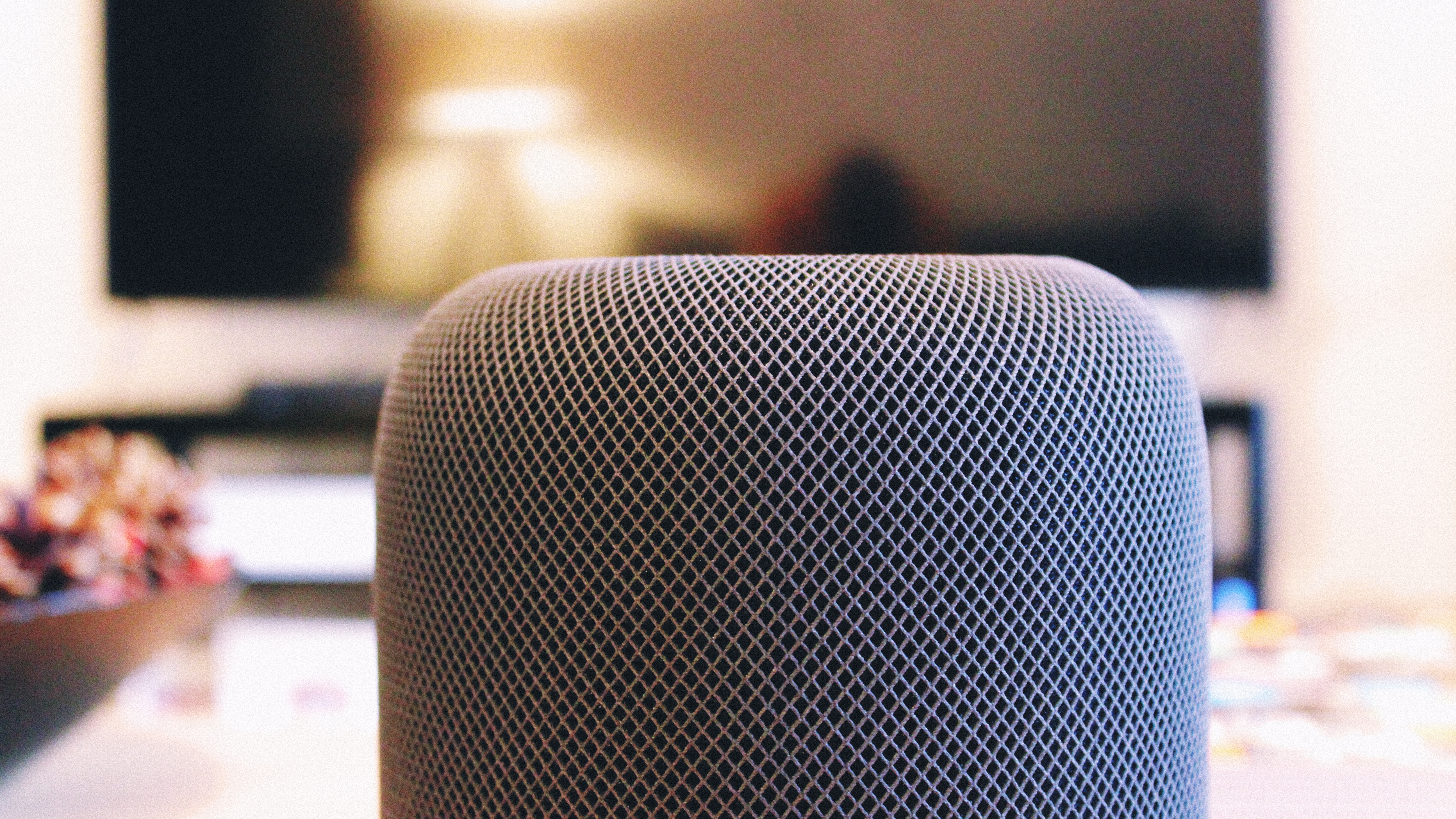
There is some stiff competition for the Denon, and that’s where it loses out a little. There’s the brand new Sonos Era 100, which features a similar design, excellent sound quality, and newer features for a similar price. That comes more down to which speaker you like the look of, and whether you’re already invested in the Sonos ecosystem.
There’s also, of course, the HomePod 2. That is going to give you native Siri support, but it’s also going to cost you a whole bundle more than the Denon. It does look at least a little more interesting, however.
There’s also the Amazon Echo line of speakers, which come in at loads of price points. Just like the Denon, you’re going to get Alexa support built in, but you won’t get the excellent sonic tuning of the Denon speaker.
Denon Home 150: Should you buy this?
You should buy this if:
- You want a great-sounding smart speaker
- You want something that's going to blend into your home deco
- You like illuminated touch controls
You shouldn’t buy this if:
- You like bassy music
- You want something that looks different
- You want to use Siri natively
Denon Home 150: Verdict
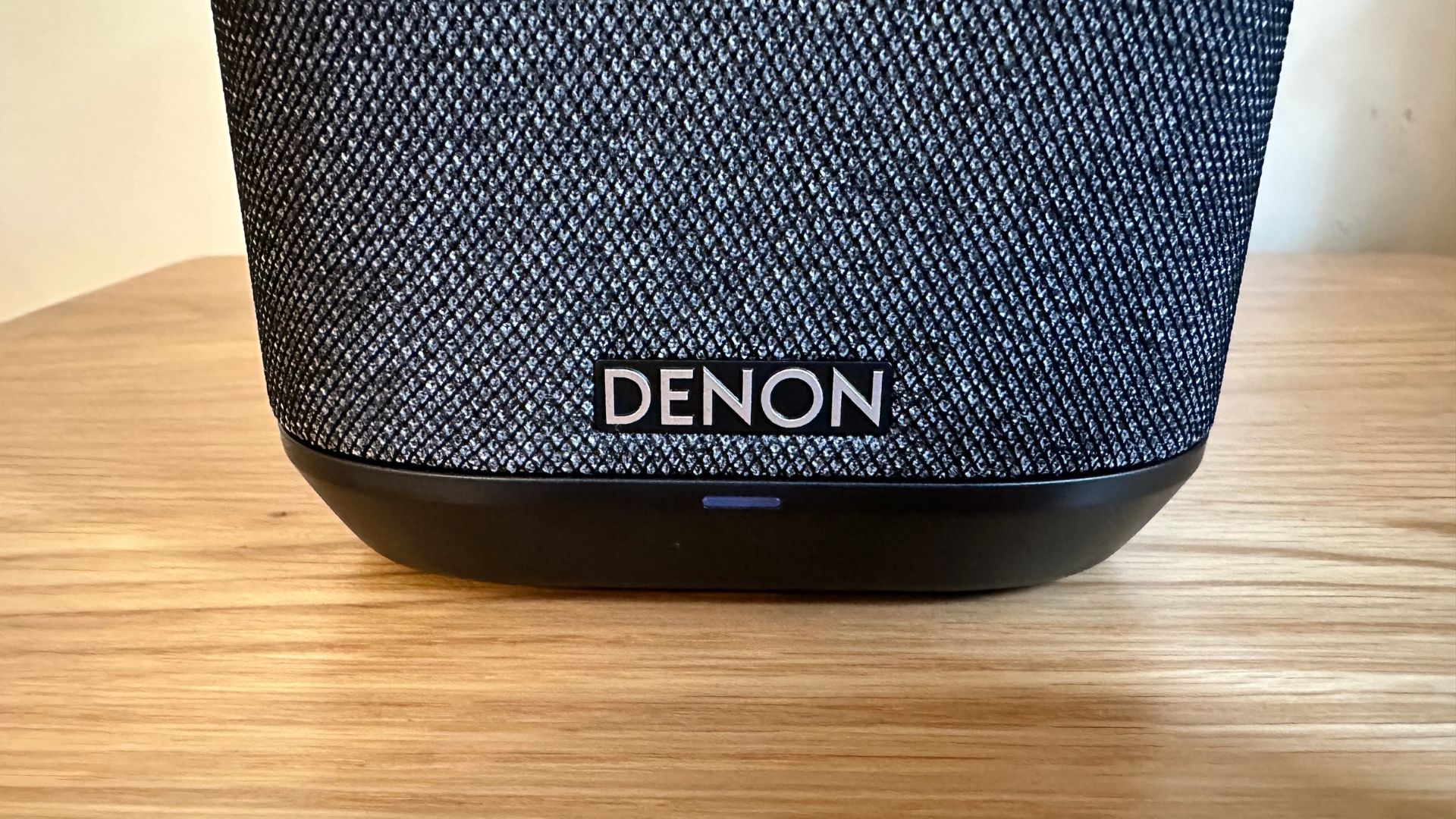
The Denon Home 150 is a very solid wireless, smart speaker. If you choose it over its competitors, you’ll get a great speaker, albeit one that’s not quite as attractive as others out there.
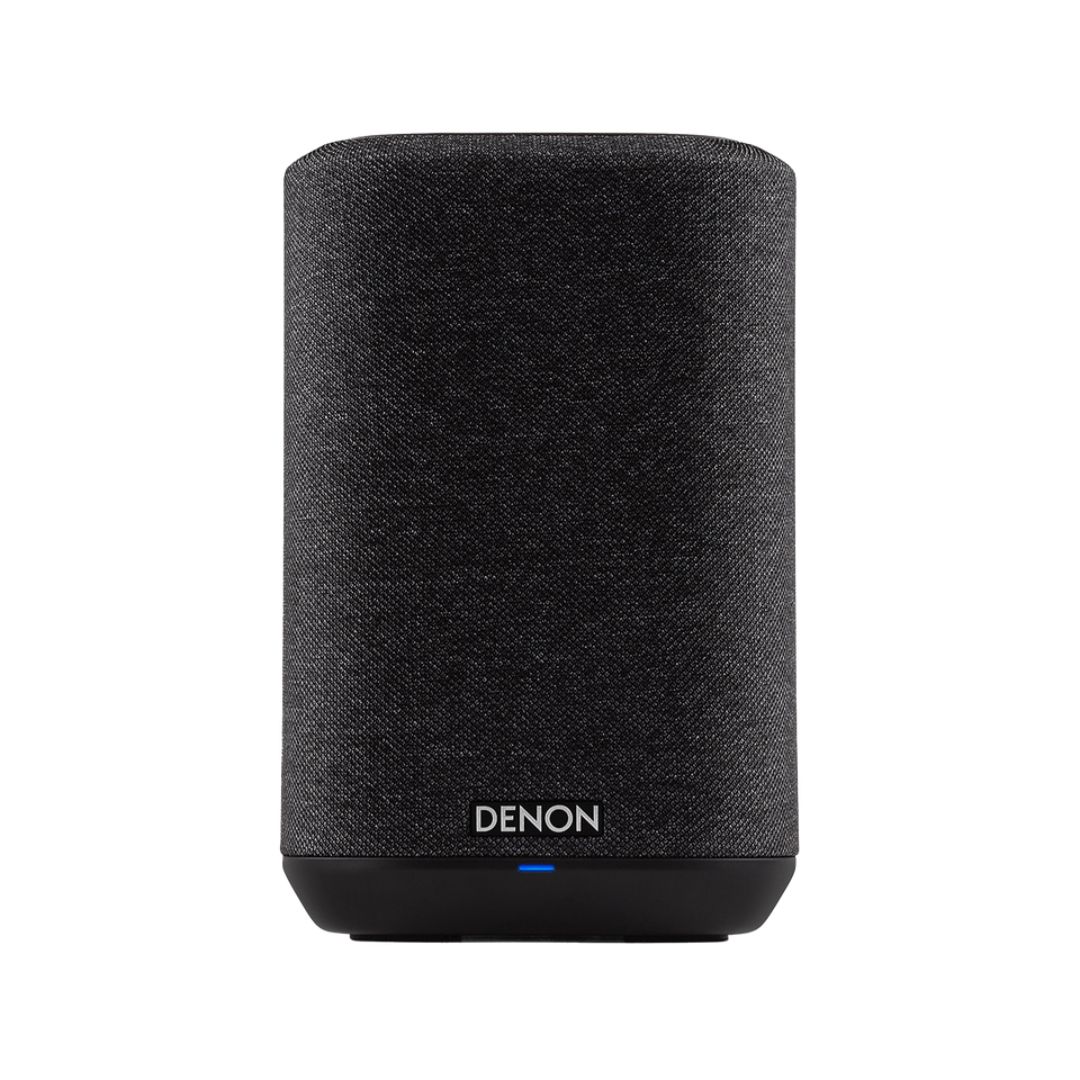
Blending in
The Denon Home 150 is hardly very imaginatively put together, but it excels sonically and in its connection methods. If you haven’t already filled your house with other brands of smart speaker, this is an excellent option.

As iMore's Senior Staff writer, Tammy uses her background in audio and Masters in screenwriting to pen engaging product reviews and informative buying guides. The resident audiophile (or audio weirdo), she's got an eye for detail and a love of top-quality sound. Apple is her bread and butter, with attention on HomeKit and Apple iPhone and Mac hardware. You won't find her far away from a keyboard even outside of working at iMore – in her spare time, she spends her free time writing feature-length and TV screenplays. Also known to enjoy driving digital cars around virtual circuits, to varying degrees of success. Just don't ask her about AirPods Max - you probably won't like her answer.
